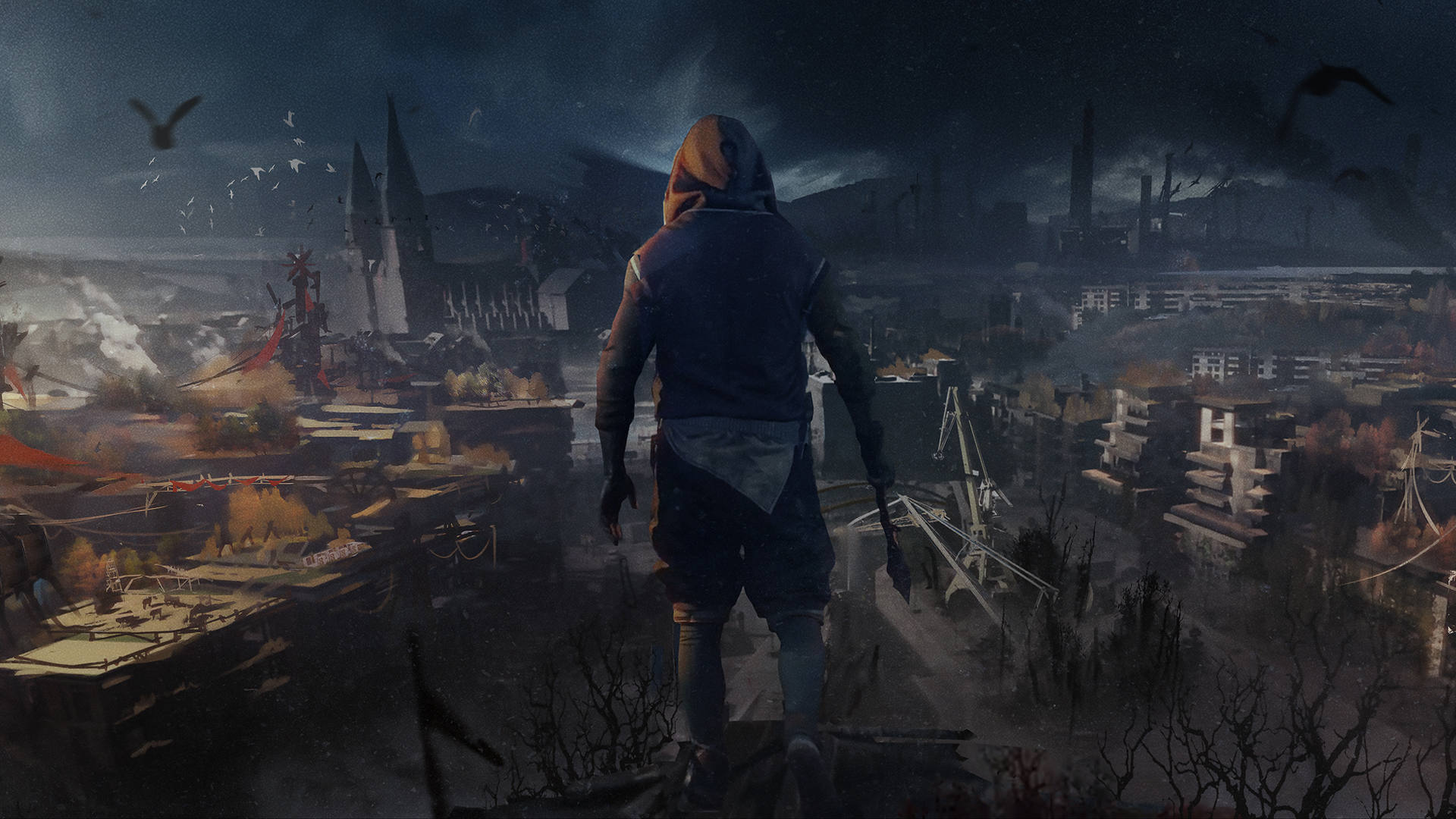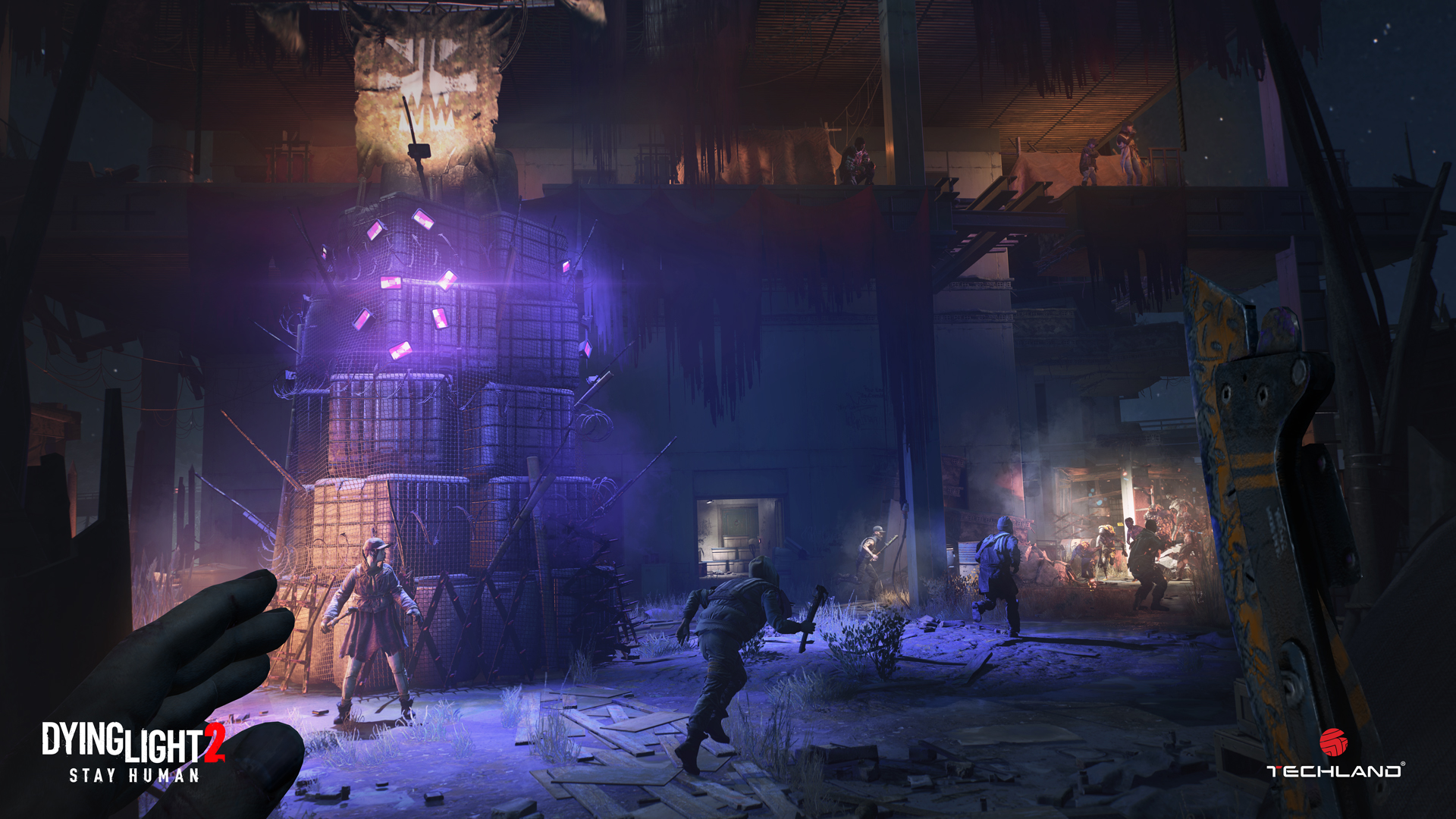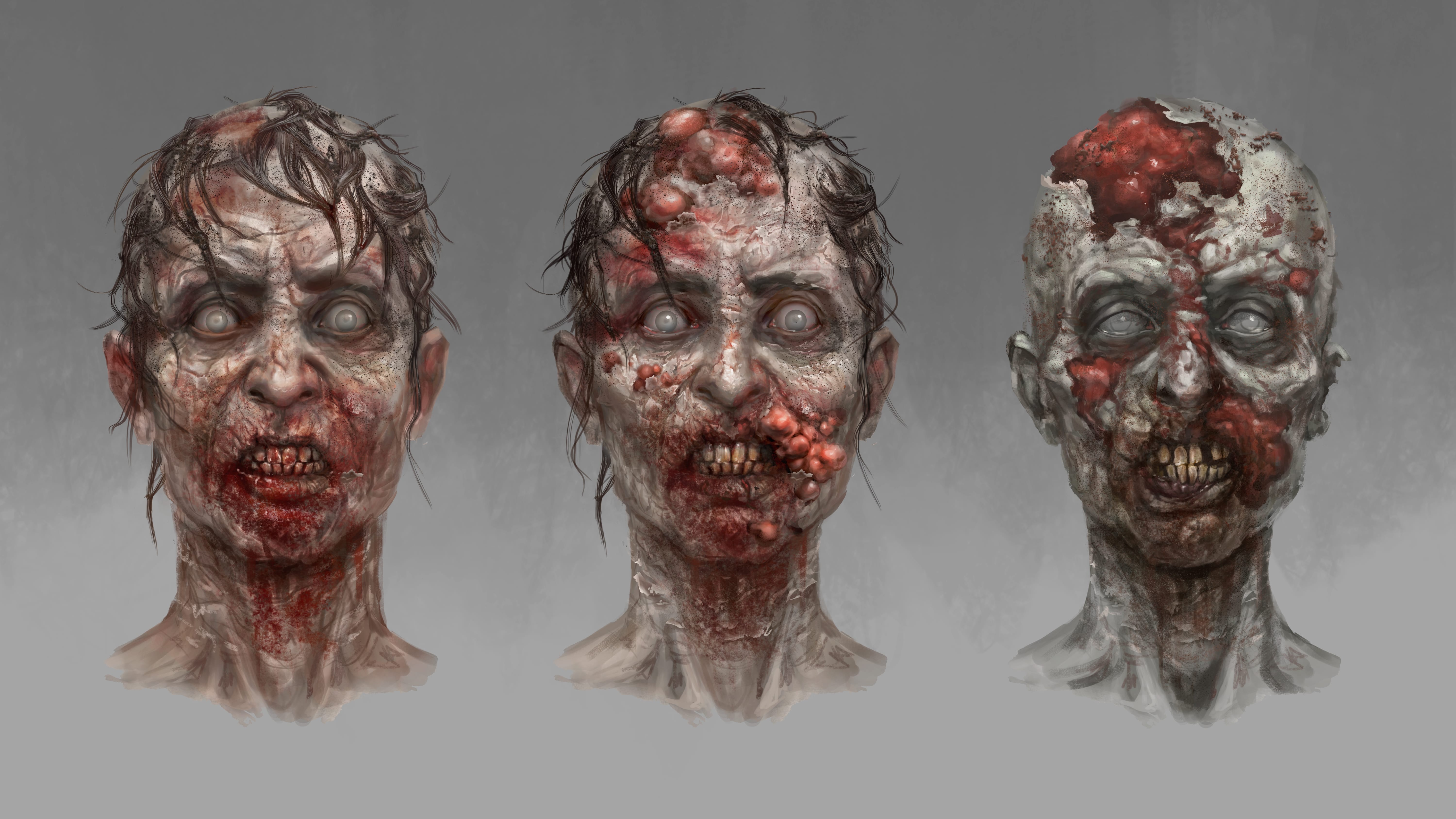
It would be charitable to suggest that Dying Light 2 is going to drag you into a hell on Earth. If anything, the chaos contained within the towering walls of The City is something far worse – insidious, really. The cure Kyle Crane spent so much of the first game chasing has failed to materialize. The viral outbreak has spread beyond the borders of Harran and all throughout the global population. For what remains of humanity, huddled amongst the filth and decay of The City, the Global Relief Effort is but a distant memory – a whisper you'll sometimes hear on the wind between the howls of bloodthirsty monsters. In Dying Light 2, every single human is on the precipice of waking up dead – even you.
Techland used the second episode of its Dying 2 Know video series to introduce us to the new suite of infected that we'll come up against in Dying Light 2: Stay Human. Lead game designer Tymon Smektala teased out a few new details on the infected life cycle, explaining: "Our monsters used to be sick and suffering people who just didn't manage to find UV light or any other cure in time. The virus causes them a lot of pain and it makes them suffer. They are not driven by hatred but by instinct – their new nature."
We were eager to learn more about the infected's "new nature", but there's a problem here: we're hyper impatient and the December 7 release date is just too far away. Thankfully, we were able to get some new and exclusive information from Techland, with the studio willing to go in-depth on how the Dying Light 2 infection evolves, how it spread through the population, and how UV light can both heal and hinder those carrying the virus in their system.
How the virus spreads
"The virus is transmitted by bodily fluids. Infection occurs by ingesting contaminated body fluids or sprays, and by getting bitten by an infected organism," says Anna Kubica, brand manager for Dying Light 2. What this means, effectively, is that everyone you meet in Dying Light 2 will already be within a stage of the infection life cycle. That infection is treatable but there is no cure. In Dying Light 2, standing in the sun can save you – but lingering for too long in the shadows isn't something that you can survive.
"Although the infection continues developing once contracted, the most dangerous stages of infection occur after crossing a point of no return. Managing infection can be controlled by UV light exposure – if you stay in the sun, you're safe… at least until nightfall. That's why Aiden Caldwell, along with everyone else in The City, carries a Biomarker. Biomarkers allow humans to monitor their rate of infection and track how close they are to the point of no return."
You've probably seen the biomarker attached to the right wrist of Caldwell in the Dying Light 2 gameplay trailers. Once recovered and attached to the vein, the device is a permanent fixture which monitors the progression of the virus in the wearer's system. Sunlight and UV rays will hold the infection back but, should you spend too long in the darkness, the infection will begin to advance and mutation will begin to occur. Keeping an eye on the status of your biomarker is a huge part of the gameplay loop in Dying Light 2, particularly as you begin exploring some of The City's darkest corners.
As you set out as Aiden Caldwell, making choices that will reportedly have consequences for the entire world-state, you will see your fate reflected in every enemy you encounter. Each of the monsters haunting The City are other citizens who failed to avoid being bitten or find the light in time – to heed the warning of their Biomarker. Which is weird, because from what we've been told by Techland, no human would want to go past the point of no return.
Sign up to the GamesRadar+ Newsletter
Weekly digests, tales from the communities you love, and more
There are multiple stages of infection


Want to get a new look at one of the Dying Light 2 special infected enemy types? You can meet the Banshee in this exclusive Dying Light 2 art.
Techland has detailed four stages of infection so far. Humans can manage a stage one infection easily enough once the symptoms start manifesting. "The first notable symptoms are similar to a normal fever. Fortunately, the fever-like condition is manageable and can be slowed down or even paused. The sickness progresses when an infected human spends too much time in the dark," says Kubica. "UV light protects against the virus's progression. However, UV light doesn’t heal the infected outright, rendering those who contract the virus dependent on UV exposure constantly."
"Extended exposure to darkness causes the symptoms to progress rapidly with increased severity until the infected human becomes a Viral – a monster that's as agile as it is bloodthirsty," Kubica continues. That's what happens at Stage Four of the infection, the turning point. Once a human gets here they will begin to transform, with the mutation becoming more severe the longer they linger in darkness. Sadly, that's a necessity for Virals, given that UV light will damage the host rather than heal them at this stage. "When an infected subject's blood reaches a certain viral density, UV light degrades and kills the virus – but also kills the infected host."
You'll encounter Viral enemy types all over Dying Light 2's sprawling open world. These monsters act on instinct and are, Kubica assures us, "extremely quick, agile, and dangerous". If you encounter a pack of Virals when exploring indoors, the best tactic is to run outside and into the light – this will remove a little bite from an encounter, changing the enemy type in real-time.
"Virals possess a predator instinct which can occasionally drive them into daylight while hunting a victim. Because the virus is weakened by UV light, these Virals will degrade into Biters. Biters move slowly and sunlight is extremely dangerous to them. UV light hurts them, often causing Biters to suffer. Sun-damaged Biters will often crawl in agony until they die," she says. Of course, Virals aren't the only threats to The City in Dying Light 2 – the infection only gets worse from here.
The types of infected you'll encounter
Once any human reaches Stage Four of the infection cycle they are doomed to become more volatile over time. Humanity is stripped away as the infected body transitions from Viral to Volatile – more dangerous monsters that you'll need to find new tactics to tangle with. "Volatiles are infected organisms developed entirely in darkness. They are never seen on the streets during the day, and instead stay hidden in dark places," says Kubica. "UV light affects Volatiles in a similar manner to other infected; UV flashlights are an effective means of protection against them, but it is significantly more difficult to damage a Volatile with UV light because of their increased mobility."
You can spot a few Volatiles in action in the most recent Dying Light 2 developer walkthrough and they look truly terrifying, although Techland promises that there are even scarier threats lurking out there in the night. "Special Infected are created when the chemicals that created the infection progress at an alarming rate, causing mutations."
"There are a variety of special infected in Dying Light 2 Stay Human. For example, The Revenant: He's imposing, scary, and extremely intelligent. The Revenant appears at night in specific areas and fighting him plays out completely different from the other infected. To make matters worse, the mutations on his back emit a substance that summons and buffs nearby infected—if you're going to fight the Revenant, be prepared to face more than one monster. Other special infected like Banshee and Demolisher have distinct physical features and behavioral patterns."
Which is all to say that you're going to have one hell of a time surviving in Dying Light 2, let alone getting anything else done in The City. By introducing a more robust infection life cycle, Dying Light 2 has not only affixed an ever-present threat of death to your wrist, but it's built a system that ensures that the world becomes more dangerous over time. With every passage from daytime to night, the viral become a little more volatile – who knows what horrors we'll uncover in the depths of Dying Light 2 when it launches later this year for PC, PS5, Xbox Series X, and last generation consoles.

Josh West is the Editor-in-Chief of GamesRadar+. He has over 15 years experience in online and print journalism, and holds a BA (Hons) in Journalism and Feature Writing. Prior to starting his current position, Josh has served as GR+'s Features Editor and Deputy Editor of games™ magazine, and has freelanced for numerous publications including 3D Artist, Edge magazine, iCreate, Metal Hammer, Play, Retro Gamer, and SFX. Additionally, he has appeared on the BBC and ITV to provide expert comment, written for Scholastic books, edited a book for Hachette, and worked as the Assistant Producer of the Future Games Show. In his spare time, Josh likes to play bass guitar and video games. Years ago, he was in a few movies and TV shows that you've definitely seen but will never be able to spot him in.


